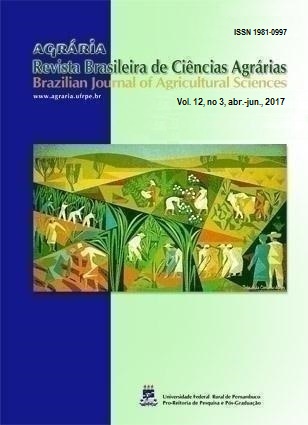How the variables in crop species seed analysis are interrelated
DOI:
https://doi.org/10.5039/agraria.v12i3a5451Keywords:
multivariate analysis, forage, germination, legumes, purityAbstract
The aim of this study was to evaluate the direct and indirect relationships between normal seedling germination and other crop seed analysis variables, to identify the relative contributions of seed variables and combine analyses for each crop species. The study was based on the results of 1.332 seed analyses carried out between 2007 and 2014 obtained from the seed laboratory archives of the Universidade Federal de Santa Maria. Path analysis confirmed the true association and influence of dead seeds on the reduction of the germination of Oryza sativa, Avena strigosa, Lolium multiflorum e Triticum aestivum. There was no casual relationship and direct effects of percentage of inert material, other seeds and dormant seed on germination. Germination is more representative in explaining the variability in Lolium multiflorum and Triticum aestivum. The cluster analysis of seed analysis discriminated against regarding your quality of seed lots. The groups differed significantly by germination, percentage of dead seeds and other seeds in Oryza sativa, Glycine max and Lolium multiflorum, respectively.
Downloads
Downloads
Published
How to Cite
Issue
Section
License

This work is licensed under a Creative Commons Attribution-NonCommercial 3.0 Unported License.


